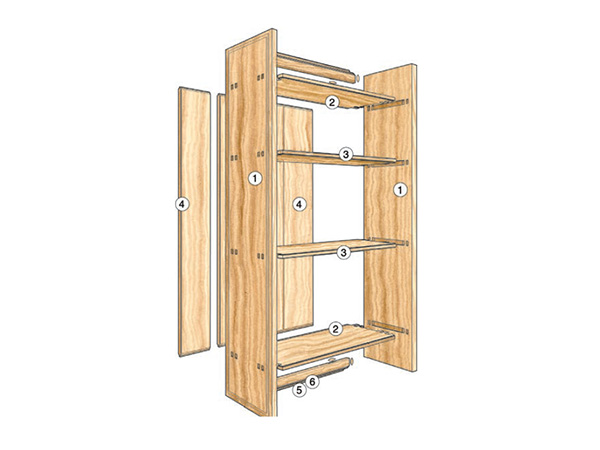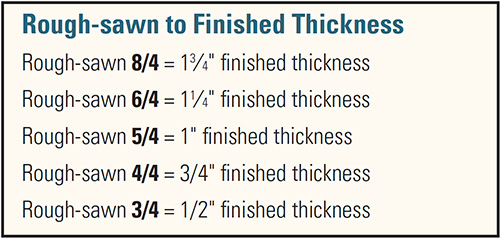
Once you have a material list developed for a project, next comes determining how much lumber you’ll need to build it. Lumber is sold in a variety of forms. Dimension lumber (2 x 4s, 4 x 4s, etc.) is generally softwood lumber. Hardwood lumber is sometimes milled to dimensional sizes but is more commonly found in random widths and lengths.
It is sold as roughsawn lumber and in variable surfacing options with letter and number codes:
•S2S: Surfaced two sides.
•S3S: Surfaced two sides with one straight-line ripped.
•S4S: Surfaced four sides, which means that the two wide faces have been planed and the two edges have been straight-line ripped.

Rough lumber is sold in multiples of 1/4″ thicknesses. So 4/4 lumber (read as four-quarter lumber) is one inch thick. Also common are 5/4, 6/4 and 8/4 thicknesses. With any rough lumber thickness, the rule of thumb is to subtract 1/4″ to determine the “finished” stock thickness after surfacing.
Board Feet

Lumber is usually sold by the board foot (BF), a volume measurement. Think of one board foot of lumber as 1″ thick, 12″ wide and 12″ long (essentially 144 square inches of 1″-thick lumber). So a 1″-thick board, 6″ wide and 36″ long would be 1.5 board feet of stock. The formula for determining the BF of a specific piece is: (Thickness x Width x Length)/144. See the formula chart above for examples of calculating BF. Note: 3/4″ surfaced lumber is considered 1″ when calculating board feet because it is originally derived from 4/4 rough-sawn lumber.
Buying Lumber

Determining how many board feet of lumber you need for a project is just the first step. Next, you need to examine the material list for pieces that have length requirements. For example, if there are table legs that need to be 42″ long or 90″-long bed rails, you will need to select or order stock long enough to make those parts. Then, a good rule of thumb is to add 20 to 30 percent more to your estimate for waste (defects, poor grain pattern, building mistakes, etc.). So if your project requires 10BF, procure 13BF instead. Buying a bit of extra lumber is always a good idea, and experience will prove the truth of it.





